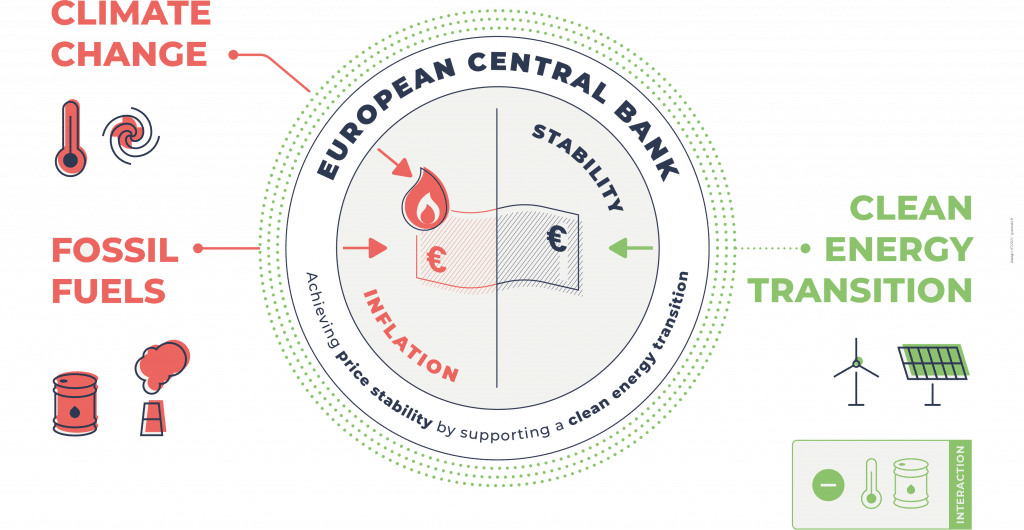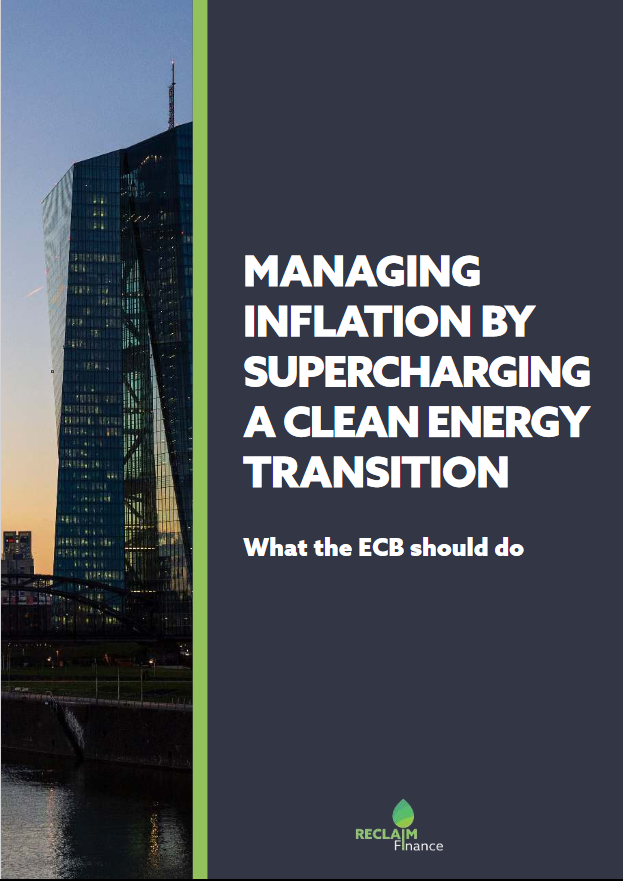The energy price surge that started in 2021 is taking place as the world emerges with difficulty from the Covid-19 pandemic and faces the impacts of extreme weather conditions due to climate change. Both, aggravation of climate change and higher energy prices can significantly amplify poverty and inequality. As part of its price stability mandate, the European Central Bank (ECB) has an important role to play: managing inflation by supporting a clean energy transition in the European Union (EU).
CLIMATE Change & FOSSIL FUELS IMPACT INFLATION

On one hand, climate change impacts inflation (“climateflation”) through its wide-ranging physical consequences, such as harvest disruptions that can drive food prices up. This impact triggers supply shocks and price volatility. It will amplify with every additional increment of global warming.
On the other, our dependency on fossil fuels (“fossilflation”) – the main cause of global warming – can significantly contribute to inflation. The current, historically high, inflation levels are mainly due to fossil fuel prices. Rising fossil fuel prices directly increase household energy bills, but also make other commodities and services more expensive.
Both climateflation and fossilflation affect the poorest households the most.
MANAGING INFLATION THrough ENERGY TRANSITION
Clean energy is sustainable, competitive and secure. Replacing fossil fuels by renewable energy sources could significantly lower energy bills and reduce energy price volatility, while contributing to energy security. If the clean energy transition could cause short-term energy price increases (“greenflation”) – notably due to difficulties involving the supply of critical materials – this impact would be very limited compared to current fossil-related disruptions. Furthermore, this transitory effect could be mitigated in a planned and progressive transition.
Indeed, an early and decisive climate action would bring the best macroeconomic outcomes and would help manage inflation, whereas a delayed or failed transition would result in far greater and more volatile inflation and energy prices. At the EU level, this means that climate policies must be implemented and climate goals followed to avoid dramatic consequences and to keep a lid on inflation.
Ecb’S MISSION: SUPPORT A CLEAN ENERGY TRANSITION
The ECB’s primary mandate is to ensure “price stability”, which is defined by the central bank as keeping inflation around 2%.
If the ECB must also contribute to EU climate objectives (“secondary mandate”), it can only do so in a way that is compatible with the price stability primary mandate. Given that climate-related inflations could block the ECB from reaching its price stability objective and the only way to manage climate-related inflations is to transition to clean energy, the ECB must proactively contribute to a clean energy transition. Doing so would also fulfill the ECB’s obligation to contribute to EU policies and would help avoid some of the negative side effects of current monetary policy on economic activity and public debt.
Cutting indirect support to polluters
Launching a green lending facility for building renovation.
Coordinating with the European Investment Bank and/or the European Commission

This report shows the role the ECB should take to fulfill its price stability primary mandate in a context of climate crisis and energy-driven inflation.
Exploring the three types of climate-related inflations identified by ECB board member Isabel Schnabel in a recent speech, it shows why and how the ECB is able to manage inflation by proactively supporting a clean energy transition in the UE.




